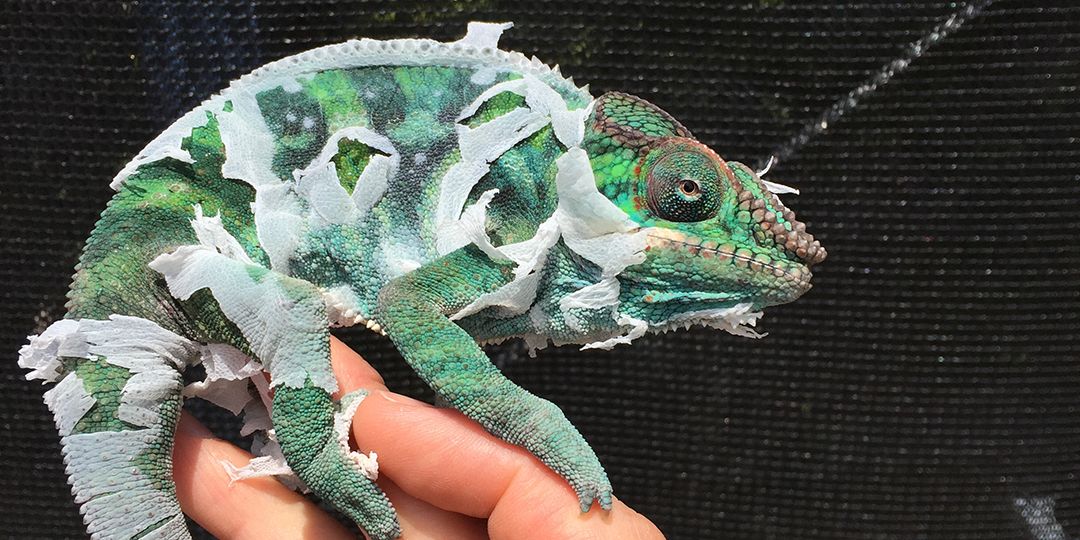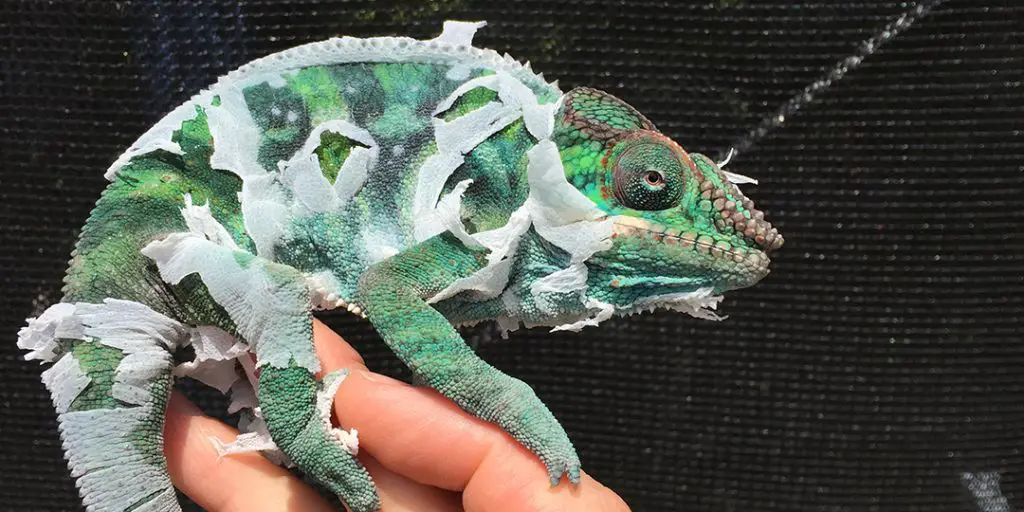Chameleons are fascinating creatures that have captured the attention of people for centuries. These reptiles are known for their unique ability to change their color and blend in with their surroundings. However, one of the lesser-known but equally intriguing aspects of chameleons is their habit of shedding their skin.
Shedding is a natural process that all reptiles go through, but chameleons have their own unique way of doing it. In this article, we will explore the reasons why chameleons shed their skin, how they do it, and what happens during the shedding process. So, if you’re curious about these amazing creatures and want to learn more, read on!

Why Do Chameleons Shed?
Chameleons are fascinating creatures that are known for their ability to change color and blend into their surroundings. But, did you know that chameleons also shed their skin? Shedding is a natural process for all reptiles, and chameleons are no exception. In this article, we will explore why chameleons shed their skin and what you can do to help them through the process.
What is Shedding?
Shedding is the process by which reptiles, including chameleons, replace their old skin with new skin. As chameleons grow, their skin becomes tight and needs to be shed to make room for new growth. Shedding also helps chameleons to remove any parasites or bacteria that may be living on their skin.
Benefits of Shedding
Shedding has several benefits for chameleons. Firstly, shedding allows chameleons to grow and develop new skin, which is essential for their survival. Secondly, shedding helps chameleons to remove any parasites or bacteria that may be living on their skin. This is important because parasites and bacteria can cause infections and other health problems. Finally, shedding allows chameleons to maintain their color-changing ability, which is essential for blending into their surroundings and avoiding predators.
Frequency of Shedding
The frequency of shedding varies depending on the age and size of the chameleon, as well as other factors such as temperature and humidity. Young chameleons shed more frequently than adult chameleons because they are growing at a faster rate. Adult chameleons typically shed every 4-6 weeks, but this can vary depending on the individual chameleon.
Signs of Shedding
There are several signs that indicate a chameleon is about to shed. These include:
1. Cloudy eyes: Before shedding, a chameleon’s eyes may become cloudy or opaque.
2. Dull skin: A chameleon’s skin may appear dull or lackluster before shedding.
3. Loss of appetite: Chameleons may lose their appetite before shedding.
4. Restlessness: Chameleons may become restless or agitated before shedding.
How to Help Your Chameleon Through Shedding
There are several things you can do to help your chameleon through the shedding process. Firstly, make sure that the humidity in the enclosure is at the correct level. This will help to soften the old skin and make it easier for the chameleon to shed. Secondly, provide plenty of water for your chameleon to drink. This will help to keep the skin hydrated and healthy. Finally, avoid handling your chameleon too much during the shedding process. This can be stressful for the chameleon and may cause them to become agitated.
Conclusion
In conclusion, shedding is a natural process for chameleons that allows them to grow, remove parasites and bacteria, and maintain their color-changing ability. As a chameleon owner, it is important to be aware of the signs of shedding and to take steps to help your chameleon through the process. By providing the right environment and avoiding unnecessary stress, you can help your chameleon to shed their skin smoothly and stay healthy.
Frequently Asked Questions
Chameleons are fascinating creatures that are known for their ability to change color and adapt to their surroundings. One of the interesting things about chameleons is that they shed their skin periodically. In this article, we will answer some common questions about why chameleons shed.
Why do chameleons shed?
Chameleons shed their skin to get rid of old skin cells that are no longer useful. As chameleons grow, their skin becomes too tight and needs to be shed so that they can continue to grow. Shedding also helps to remove any parasites or bacteria that may be on the skin.
During the shedding process, the chameleon’s skin may appear dull or discolored. This is because the old skin is separating from the new skin underneath. Once the old skin is shed, the chameleon’s color and pattern will be more vibrant.
How often do chameleons shed?
The frequency of shedding depends on the age and size of the chameleon. Young chameleons shed more frequently than adults because they are growing at a faster rate. Typically, chameleons shed every 4-8 weeks. However, some species may shed less frequently.
It is important to note that shedding may be influenced by environmental factors such as temperature, humidity, and diet. A healthy chameleon that is well-fed and kept in optimal conditions will shed regularly.
Is shedding painful for chameleons?
Shedding is a natural process for chameleons and is not painful. In fact, chameleons may not even be aware that they are shedding. However, if the skin is not shedding properly, this can cause discomfort and may require veterinary attention.
It is important to provide chameleons with a proper habitat that includes a basking area, hiding spots, and access to clean water. This will help to ensure that shedding occurs normally and without any issues.
What should I do if my chameleon is having difficulty shedding?
If your chameleon is having difficulty shedding, there are a few things you can do to help. First, make sure your chameleon has access to clean water and is properly hydrated. You can also provide a humid hide, which is a container filled with damp moss or paper towels, to help with shedding.
If the shedding issue persists, it may be necessary to seek veterinary attention. A veterinarian can help to determine if there is an underlying health issue that is causing the shedding problems and recommend appropriate treatment.
Can I help my chameleon with shedding?
While shedding is a natural process and does not require any intervention, there are a few things you can do to help your chameleon. Providing a humid hide, as mentioned earlier, can help to soften the old skin and make shedding easier.
You can also mist your chameleon’s enclosure with water to increase humidity. Just be careful not to mist too much, as this can lead to respiratory issues. Finally, make sure your chameleon is eating a balanced diet that includes a variety of insects and gut-loaded with nutritious food. A healthy diet will help to ensure that shedding occurs normally.
What to do if your chameleon is shedding
In conclusion, chameleons shed their skin for various reasons. The primary reason is to grow and replace their old skin with new skin. Shedding also helps chameleons to remove parasites and any other debris that may be stuck on their skin. Lastly, shedding allows chameleons to change their color and markings as they adapt to their surroundings.
Overall, chameleons are fascinating creatures that have unique abilities and behaviors. Shedding is just one of the many ways they adapt and survive in their environment. By shedding, they can grow, stay clean, and blend in with their surroundings. It’s no wonder why chameleons continue to captivate and intrigue people of all ages.


